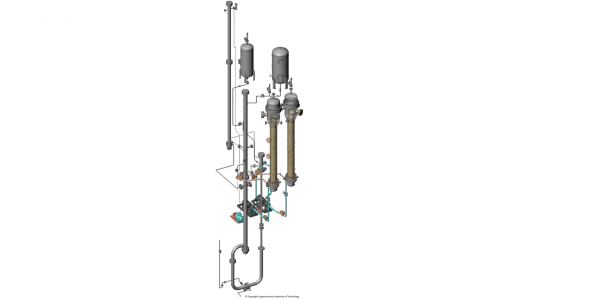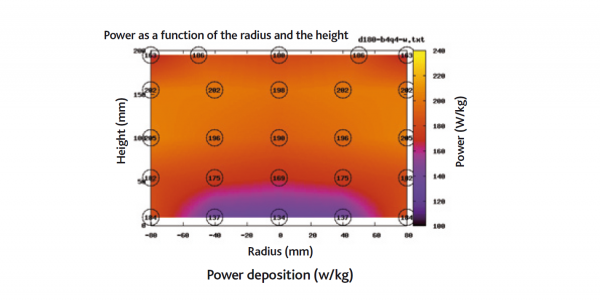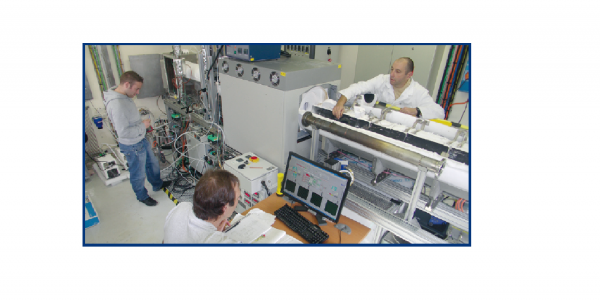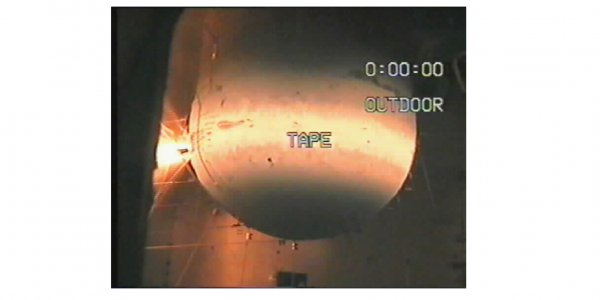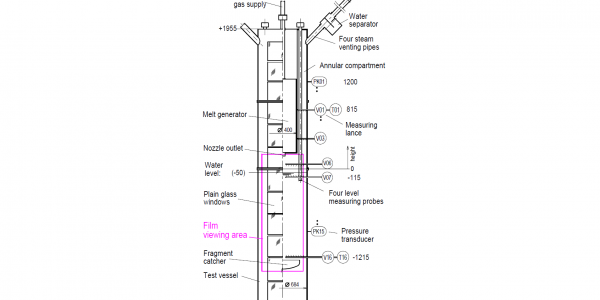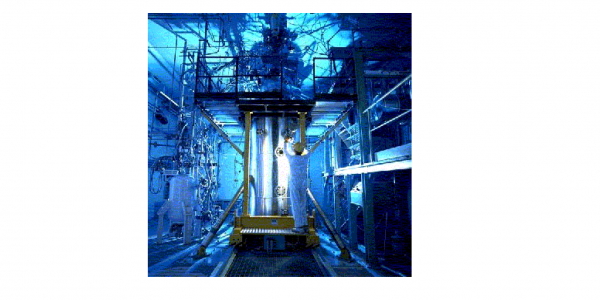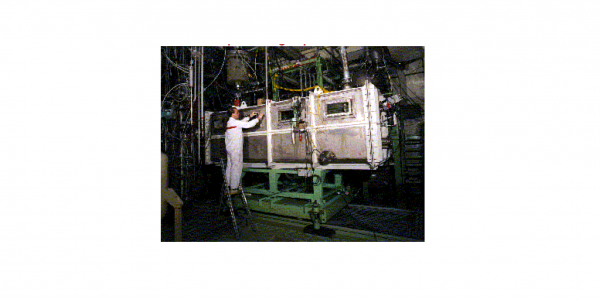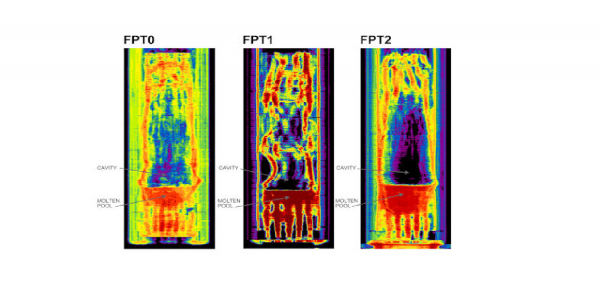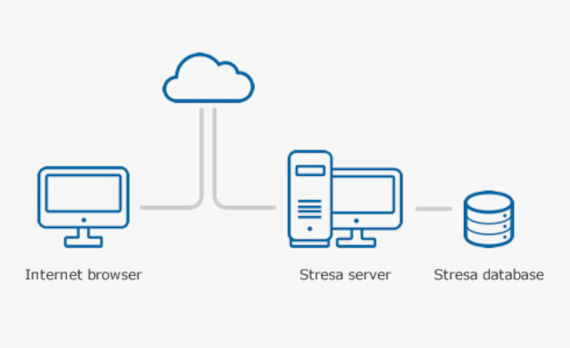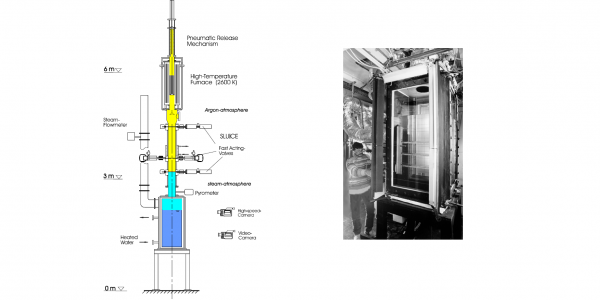
QUEOS
The QUEOS facility serves to study premixing phenomena with solid spheres, i.e. without the danger of a steam explosion and the complication of melt fragmentation. Emphasis was put on high sphere temperatures (up to 2600 K) and the use of large numbers of comparatively small spheres so that intensive multiphase interactions with strong coupling of the phases (collective motion of the spheres) are observed. In order to simulate melt jets as closely as possible, the spheres are released as a cylindrical jet into a three-dimensional test vessel.

